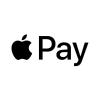
Overview
Apple Pay is Apple’s proprietary mobile payment and digital wallet service that allows users to make payments using compatible Apple devices. Launched in 2014, the service enables contactless payments in stores, online purchases, and peer-to-peer money transfers through the Apple Cash feature. Apple Pay works with iPhone, iPad, Apple Watch, and Mac devices, utilizing near-field communication (NFC) technology and biometric authentication. The service is integrated into Apple’s Wallet app and supports major credit and debit cards from participating banks and financial institutions. While technically advanced with strong security features, Apple Pay has faced significant customer service challenges and account restriction issues.
Key Features
Contactless Payments
Tap-to-pay at NFC-enabled terminals using Face ID or Touch ID
Online & In-App Payments
Secure checkout for websites and mobile applications
Apple Cash
Send and receive money directly through Messages app
Transit Integration
Use for public transportation in supported cities
Wallet Integration
Store payment cards, boarding passes, and loyalty cards
Biometric Security
Face ID, Touch ID, or passcode authentication required
Transaction History
View payment history and manage cards through Wallet app
International Support
Available in 70+ countries and regions
Pros & Cons
Advantages
- Industry-leading security with tokenization and biometric authentication
- Seamless integration across all Apple devices and ecosystem
- No fees for consumers on standard transactions
- Wide merchant acceptance at millions of locations globally
- Fast and convenient contactless payment experience
- Privacy protection - doesn't share actual card numbers with merchants
Limitations
- Frequent account restrictions with little explanation or recourse
- Limited to Apple devices only, excluding Android users
- Difficult dispute resolution process with low refund success rates
- Apple Cash account lockouts affect access to personal funds
Security Features
Face ID, Touch ID, or device passcode required for all transactions
Transaction details not linked to Apple ID for privacy
Two-factor authentication for account changes and additions
PCI DSS Level 1 compliance for payment processing
Pricing & Fees
| Service | Fee | Details |
|---|---|---|
| Standard Payments | Free | No fees for consumers using credit/debit cards |
| Apple Cash Transfers | Free | Sending/receiving money through Apple Cash |
| Apple Cash Instant Transfer | 1% (min $0.25, max $10) | Instant transfer to debit card |
| Apple Cash Bank Transfer | Free | Standard 1-3 business day transfer |
| International Transactions | Varies | Depends on card issuer's foreign transaction fees |
| Apple Card Cash Back | 1% - 3% | Rewards for Apple Card users |
Getting Started
Detailed Ratings
Final Verdict
Apple Pay offers excellent security and convenience for payments, but suffers from serious customer service deficiencies. They have a strong technical features rating.
